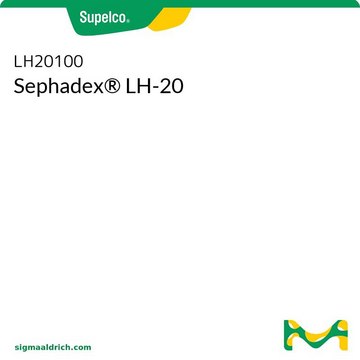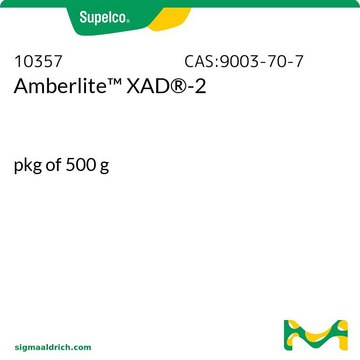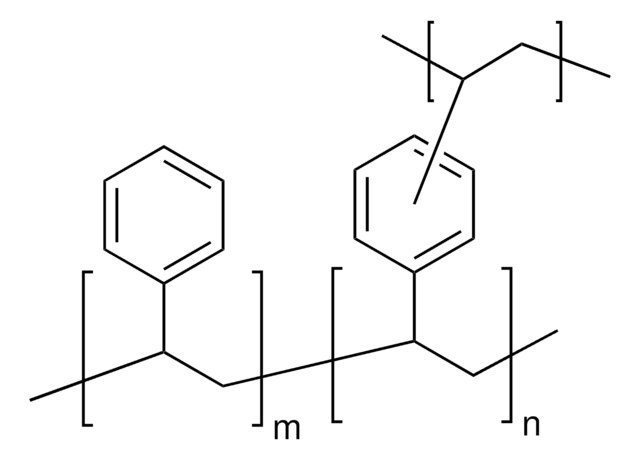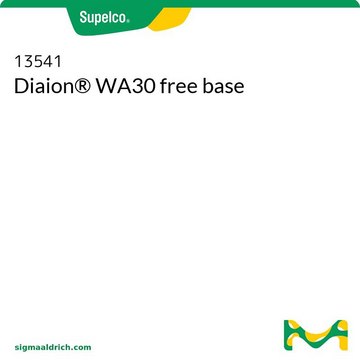Recommended Products
form
solid
packaging
pkg of 500 g
technique(s)
HPLC: suitable
LPLC: suitable
ion chromatography: suitable
thin layer chromatography (TLC): suitable
surface area
~500 m2/g
matrix
styrene-divinylbenzene
matrix active group
polymer
particle size
250-850 μm
pore size
~1.30 mL/g pore volume
260 Å mean pore size
density
1.01 g/mL at 25 °C (true wet)(lit.)
separation technique
reversed phase
InChI
1S/C10H12.C10H10.C8H8/c2*1-3-9-7-5-6-8-10(9)4-2;1-2-8-6-4-3-5-7-8/h3,5-8H,1,4H2,2H3;3-8H,1-2H2;2-7H,1H2
InChI key
NWUYHJFMYQTDRP-UHFFFAOYSA-N
Looking for similar products? Visit Product Comparison Guide
Related Categories
General description
Application
- Diaion® HP-20 was used as adsorbent for open column chromatography.
- Diaion® HP-20 was used in purification of glucosides using TLC and HPLC analysis.
Other Notes
Legal Information
Storage Class Code
11 - Combustible Solids
WGK
WGK 3
Flash Point(F)
Not applicable
Flash Point(C)
Not applicable
Personal Protective Equipment
Regulatory Listings
Regulatory Listings are mainly provided for chemical products. Only limited information can be provided here for non-chemical products. No entry means none of the components are listed. It is the user’s obligation to ensure the safe and legal use of the product.
JAN Code
13606:
Choose from one of the most recent versions:
Already Own This Product?
Find documentation for the products that you have recently purchased in the Document Library.
Customers Also Viewed
Our team of scientists has experience in all areas of research including Life Science, Material Science, Chemical Synthesis, Chromatography, Analytical and many others.
Contact Technical Service











